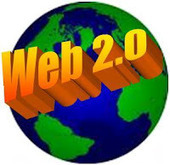Whenever I hear about deals like last week’s Facebook purchase of Instagram for $1 billion, or read a story with a title like “11 Startups That Could Get Bought for $1 Billion Tomorrow” , I get to thinking about the good old days. Web 1.0, and the ability to start shifting a bulk of my research and fact checking work out of the public library and into the home office. All I needed was a PC and a dial-up Internet connection and suddenly I could do twice as much work in half the time.
It was 1995, then 1996. It seemed a new search engine was coming at us every week. Google didn’t exist yet. You had a choice of email providers like AOL offering a way to search. Or you could go with the latest model with a clever logo and promise of getting you closer to what you were looking for – Yahoo!, Lycos, Excite, HotBot, WebCrawler, Ask Jeeves, Alta Vista.
In fact, as that decade came to a close and Google became a part of the playing field, the choice of search engines and determining which one had access to the most data is similar to the choice in social networks we are grappling with here in the midst of Web 2.0. In this land of suddenly plenty – which ones will keep us connected to the right people at the right time?



 Your new post is loading...
Your new post is loading...







